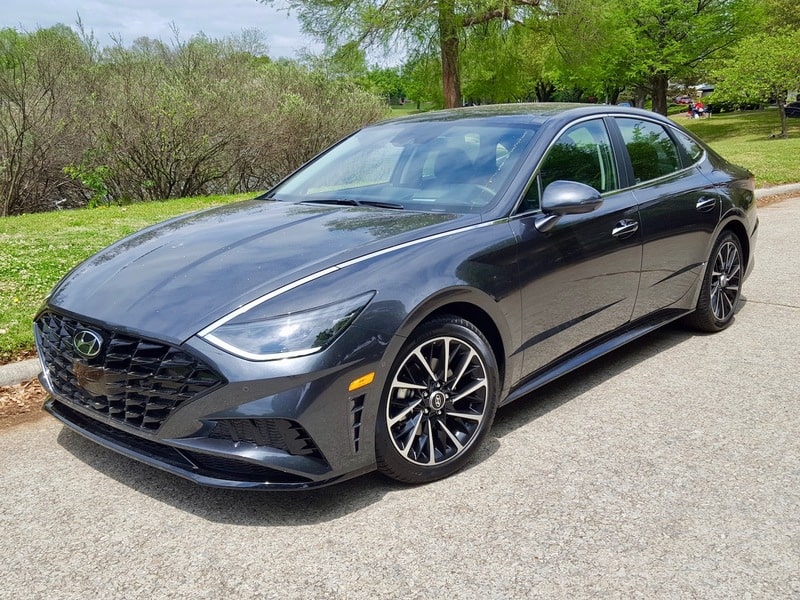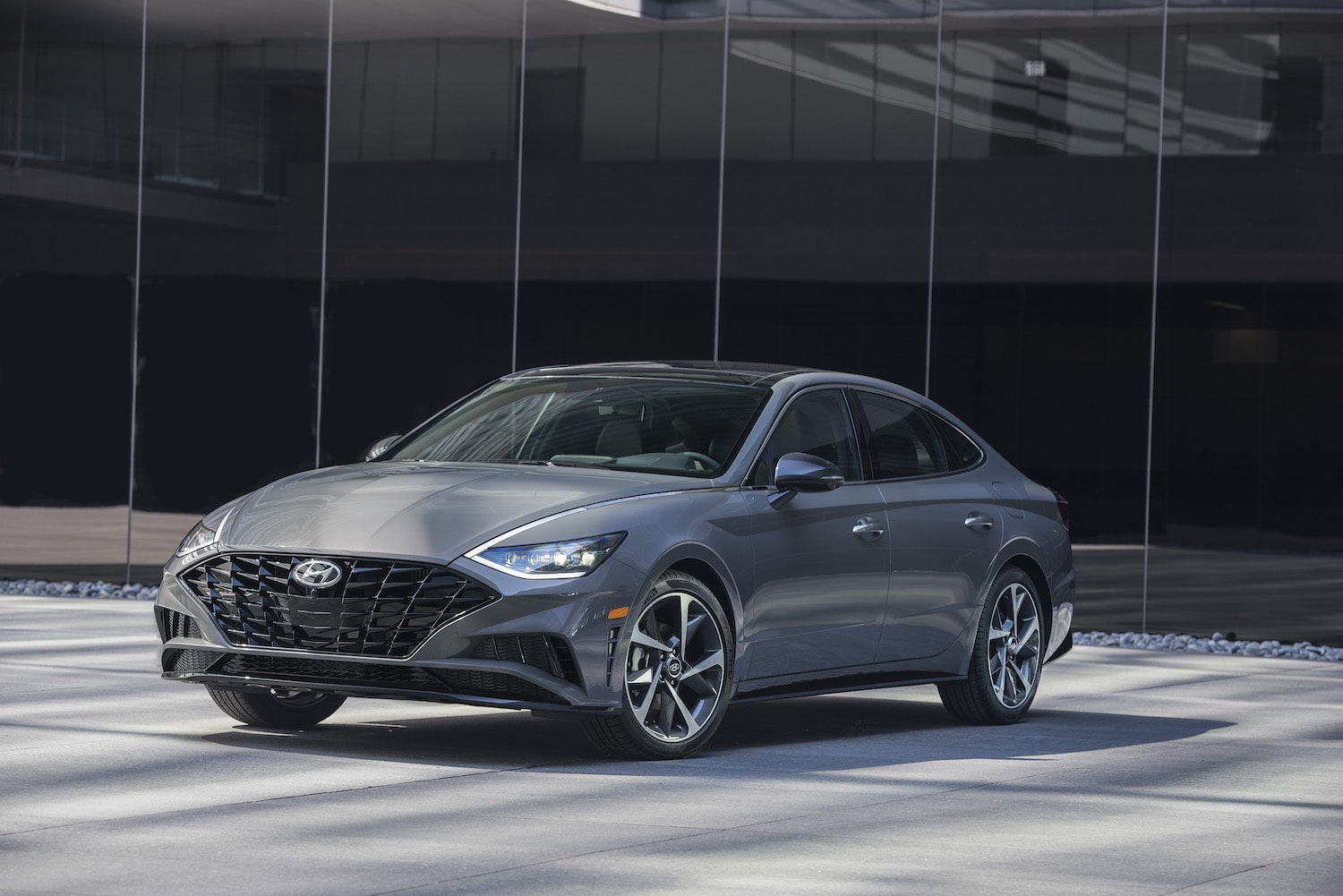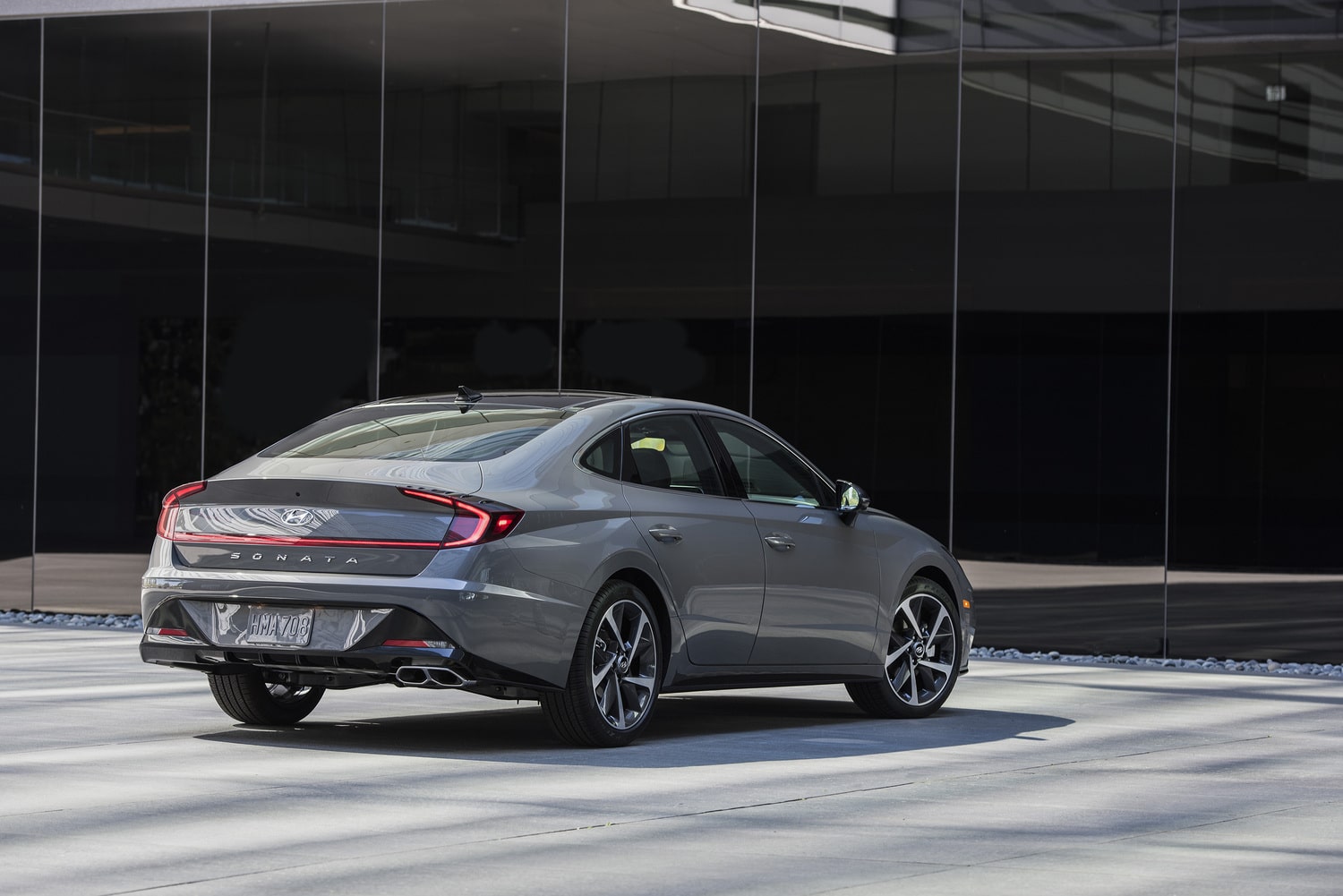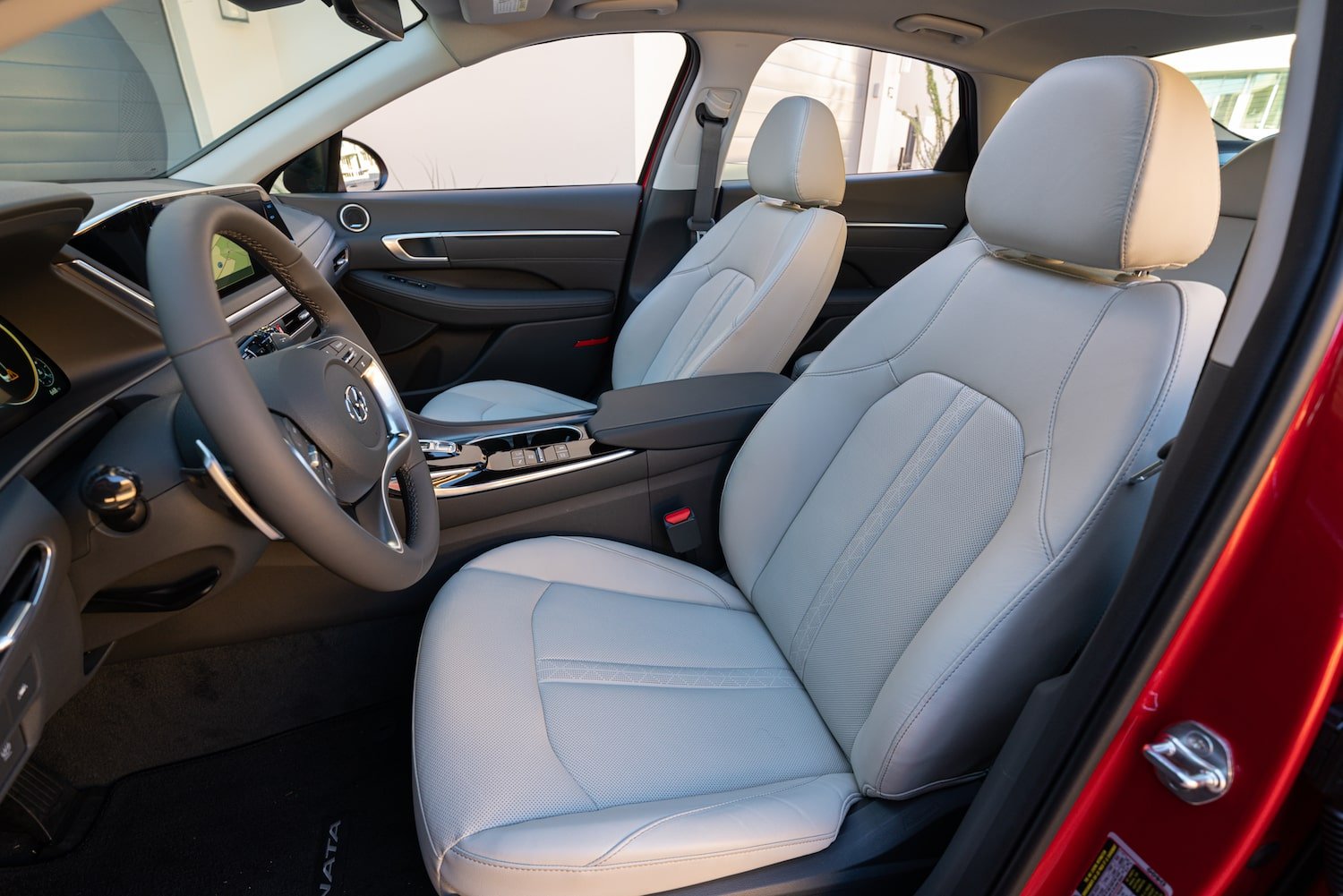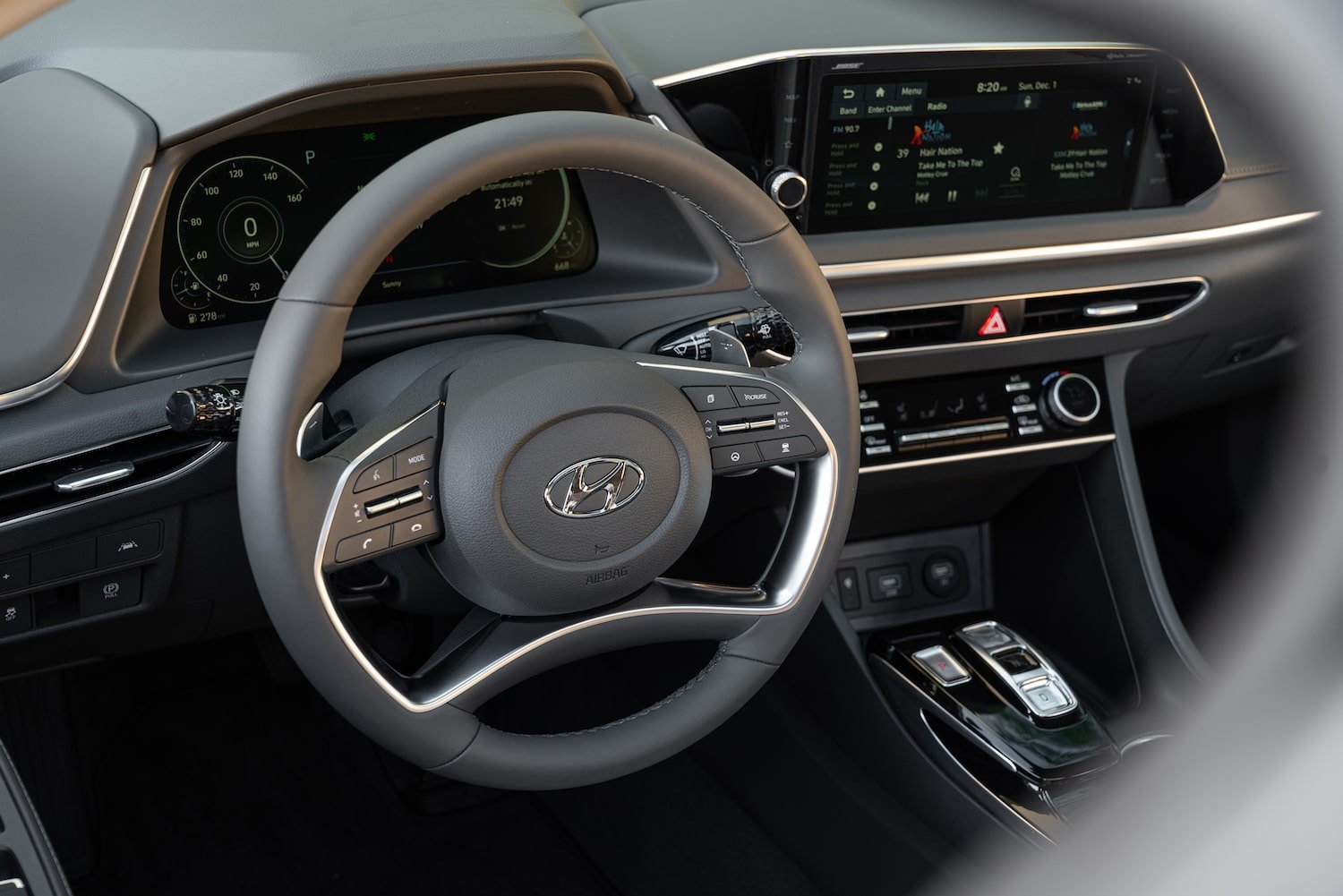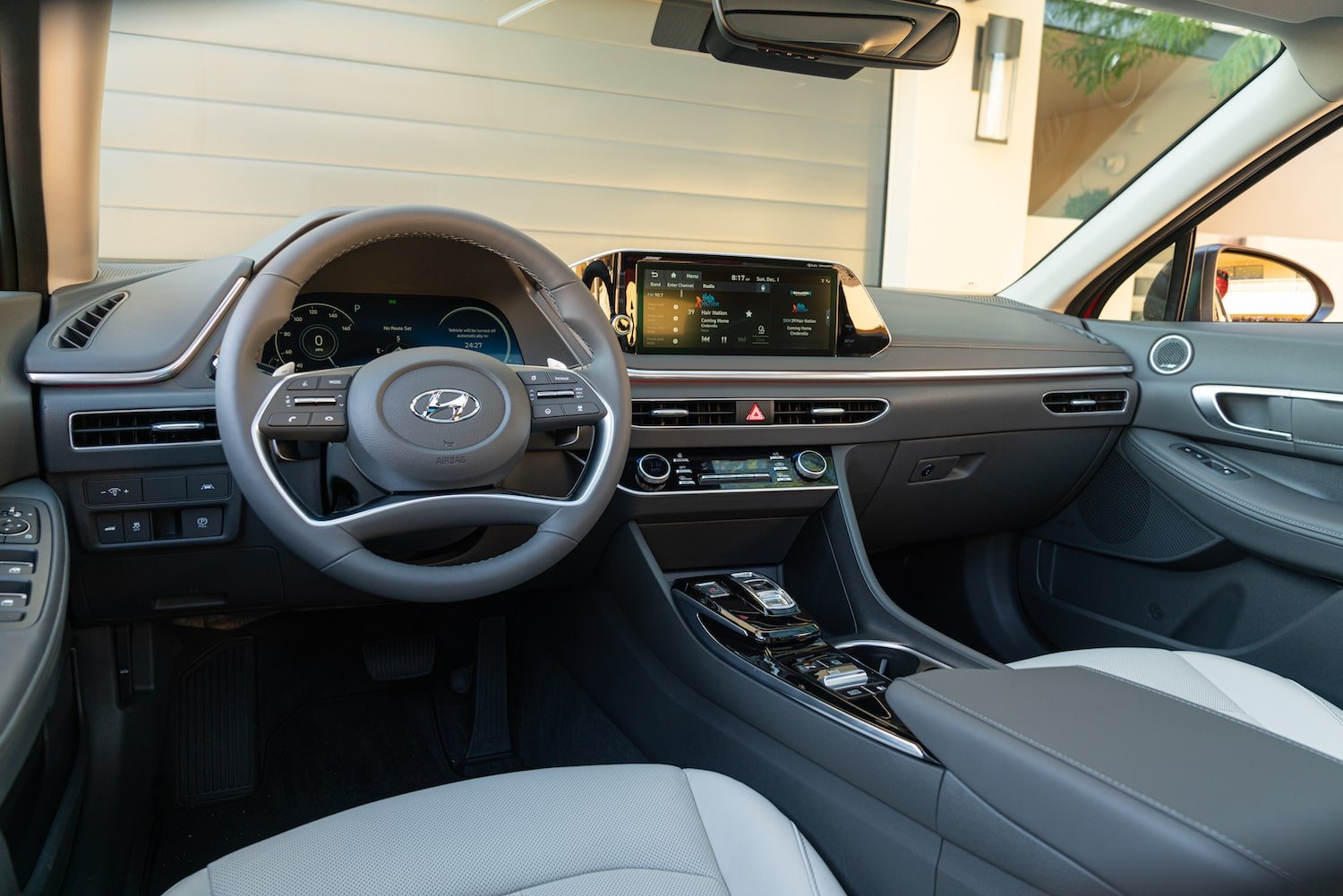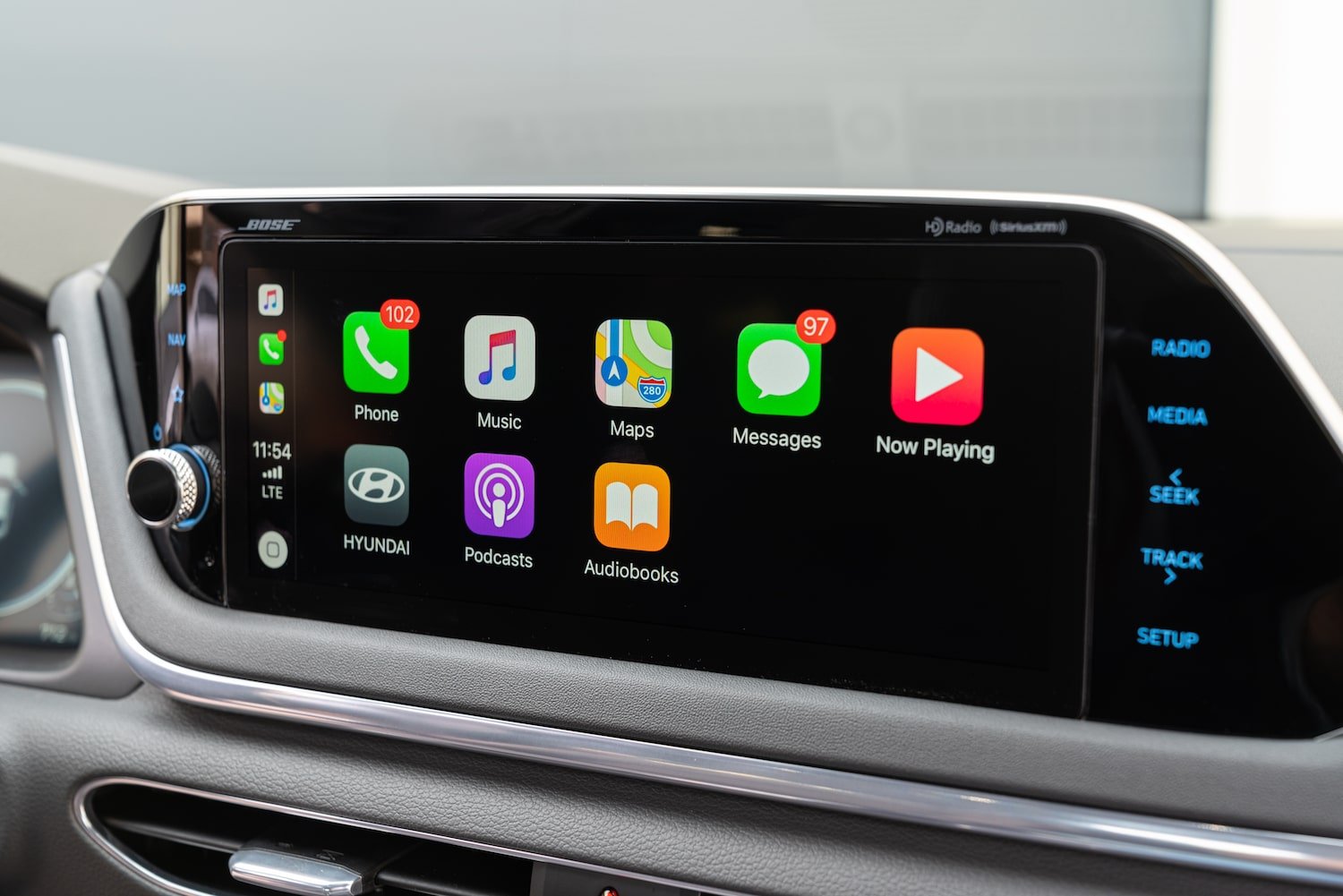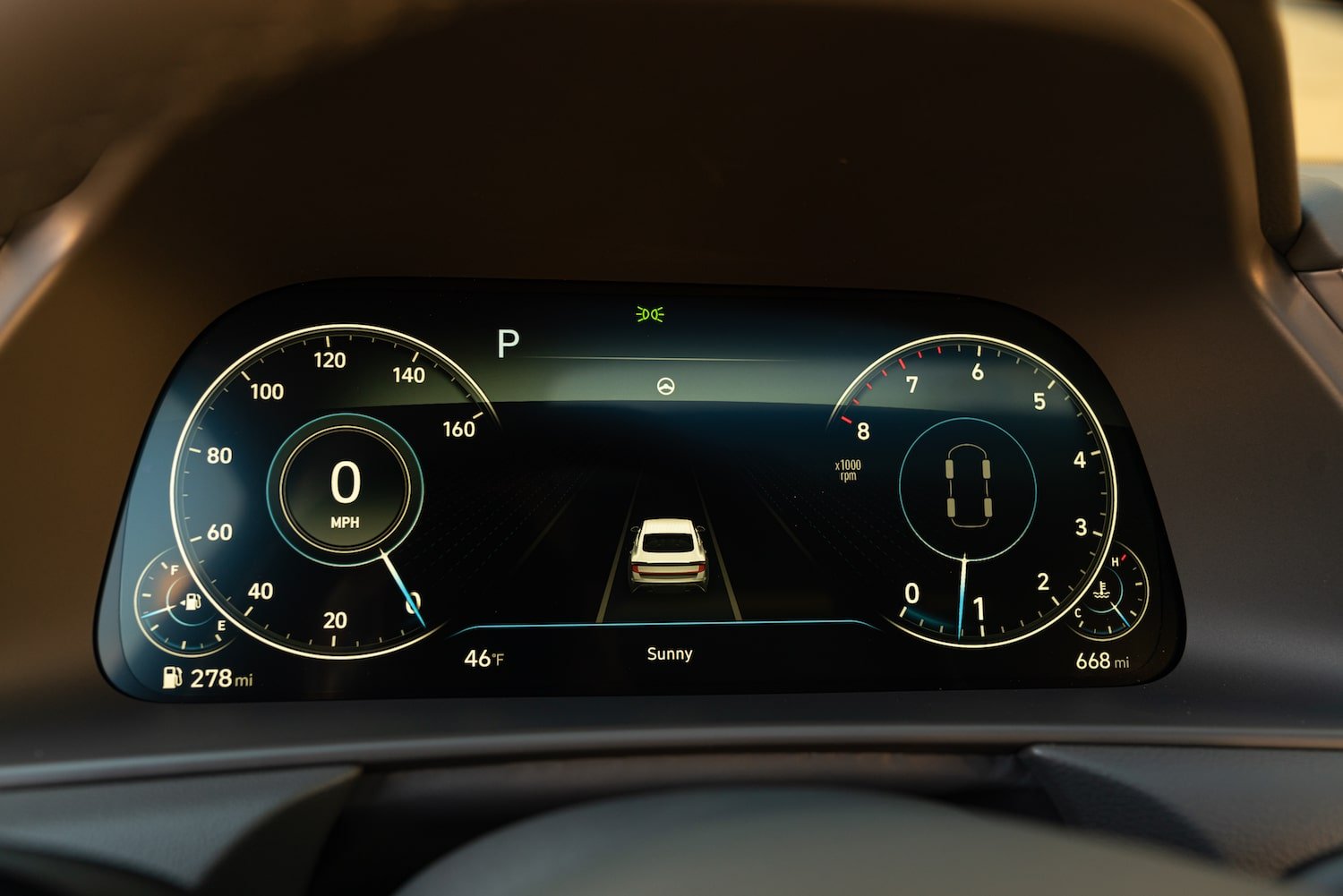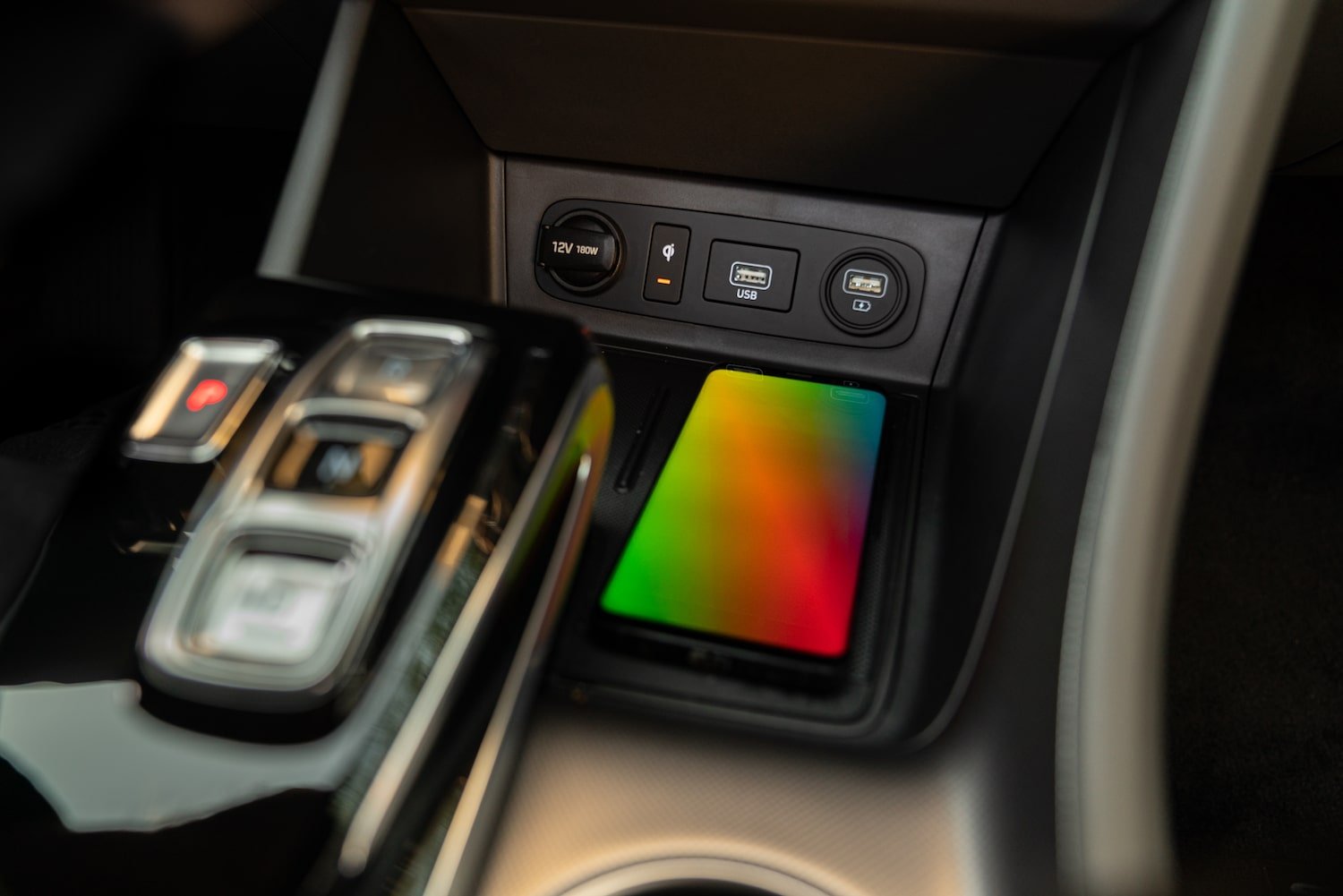Maybe I should hitch my wobbly old wagon to a polished new Hyundai.
At least I’d be moving forward at a pretty good clip.
Every time I attempt to break through one of life’s little walls in the wagon, I end up with knots on my head and splinters in my lap.
Hyundai, meanwhile, moves with enviable grace after arriving here from South Korea in 1986 with little more than big dreams, poor quality and a cheap compact sedan.
No one calls Hyundai “cheap” now, though, with its new Sonata mid-size sedan sometimes outshining and outperforming stalwarts like the Toyota Camry and Honda Accord.
If cars still counted in the truck-crazed U.S., the terrific 2021 Sonata would be one of the more significant new vehicles of the last couple of years.
In fact, the dark gray Sonata I had last week – despite its $35,000 mid-size window-sticker – often felt more like a German near-luxury sedan than a prosaic mid-size cruiser.
Like most of the sedans in its segment, the Sonata utilized a bold, blacked-out grille that looked proportional – unlike some competitors.
It was flanked by unusual headlamps that cut back into the fenders, topped by a distinctive strip of chrome tying the fenders into the car’s fresh body.
Big doors and smooth sides made the Sonata seem larger than its fairly trim 3,500 pounds, with the sides benefiting from a distinctive character line down low that started in the front door, paused and resumed in the back door.
Moreover, sleek rear tail lamps kept the Hyundai’s style percolating, as did good-looking polished 18-inch wheels wrapped with 235/45 tires.
I admit I kept muttering: This is a Hyundai?
At least, initially. My front-wheel-drive Sonata Limited relied on a 1.6-liter turbo four-cylinder that generated 180 modest horsepower – barely enough, in my opinion.
However, the little engine had a decent turbo-tune, generating 195 lb.-ft. of torque at a low 1,500 rpm, which gave the Sonata enough thrust to be respectable.
The engine also got help from a positive-shifting 8-speed automatic that succeeded most of the time in keeping the engine in its limited power range.
Actually, the little motor felt smooth and adequate in suburban driving, pushing away from stops well and seeming a bit more powerful than it really was.
It mainly lacked power over 50 mph, though if pushed hard, it could shove the Sonata to 60 mph in a reasonable 7.3 seconds.
Likewise, the Sonata’s solid ride at suburban speeds got a bit unsettled over 50, leaving the sedan feeling less composed at speed than an Accord.
Still, I never hesitated to dip into those speeds, knowing they likely wouldn’t have much effect on the Sonata’s impressive overall fuel economy of 30 miles per gallon.
My biggest complaint about the Sonata – and Hyundais in general – was their numb steering, which makes them seem slightly disconnected.
Nonetheless, I would rate the car’s drivability as a mid-B, my expectations probably amped up by the Sonata’s exceptional styling.
That extended to the Sonata’s black interior as well. It was not elaborate or overly done, but seemed smart and kind of upscale.
A deep dashboard, for instance, slid down to a sleek mid-dash dominated by a contemporary 10.25-inch touchscreen in the middle of the mid-dash.
Unfortunately, like way too many modern touchscreens, the stereo had to be tuned through the computer, making it a minor distraction.
Everything else, though, seemed modern and simple, relying on switches and knobs to control various systems.
A broad, high console, for example, provided flat push-buttons for the gears to the Sonata’s 8-speed transmission, while the sedan’s subtle leather seats were sectioned and perforated.
Even the carpet looked high-tone with thick dark fore-and-aft stripes in it. And about as I expected, the back seat sported considerable leg- and head-room.
The striped carpet, incidentally, was similar to some I saw in several high-end German sedans, and was the only option on my Sonata, a $155 item.
After spending a week with the Sonata, I admit I wondered how Hyundai makes money on the Alabama-built vehicle.
Regardless, Hyundai has learned to build a high-quality car and seems serious about taking that route.
Just don’t shake me and the wagon off the back.
2021 Hyundai Sonata Limited
- What I liked most: Just about everything, from the styling of the Sonata to its content and value.
- What I would change: The engine, and Hyundai plans to offer a performance version of the Sonata later this year with about 100 more horsepower and improved handling.
- MSRP: Base price, $33,850 for Limited model; as equipped, $34,980.
- Official color: Portofino Gray.
- Fuel economy: 27 miles per gallon in the city, 37 on the highway and 30 mpg overall with filler on the left.
- Odometer reading when tested: 1,164 miles.
- Spare tire: Temporary compact.
- Weight: 3,550 pounds.
- Length-width-height: 192.9 inches long/73.2 inches wide/56.9 inches tall.
- Fuel-tank capacity: 14.8 to 15.9 gallons.
- Towing capacity: 1,000 to 2,000 pounds.
- 2021 Hyundai Sonata Limited in a few words: A solid mid-size front-wheel-drive sedan that evolved over the last couple of years into one of the stellar cars in the segment.
- Warranty: Five-year, 60,000-mile overall warranty, ten-year, 100,000-mile powertrain protection and five-year, unlimited-mileage roadside assistance.
- Final assembly location: Montgomery, Ala.
- Manufacturer’s website: www.hyundaiusa.com
- Up next: 2021 Toyota Tundra TRD Pro
